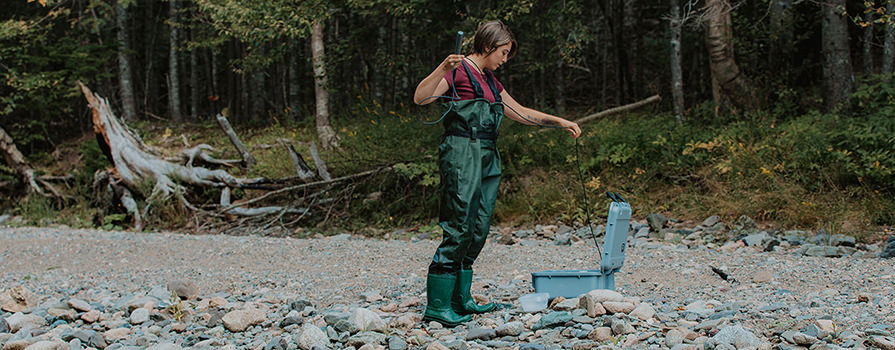Follow your passion

As a child, Kieran spent her summers discovering nature. Working alongside Mi’kmaq elders and forestry professionals at Nikani Awtiken Youth Camp, Kieran realized she belonged outdoors. Those years of exploring the woods of Cape Breton led her to NSCC, where she pursued her long-held interests in natural resource management and environmental sustainability. Kieran plans on continuing her studies at the University of New Brunswick, where her College education will count towards a degree.
“When I started the Natural Resources Environmental Technology program, it felt like a puzzle piece had finally fallen into place. I found where I was meant to be.”
Learn more about Kieran’s experience in her own words:
Q: What sparked your interest in the natural resources field?
When I was younger, I attended a camp put on by the Unama'ki Institute of Natural Resources. The camp was called Nikani Awtiken, which means trail blazing. It involved working outside with elders and forestry professionals. Being outdoors, I found where I belonged.
Q: Why did you choose NSCC?
I not only wanted theory-based classroom learning, I wanted to get real, hands-on experience – to make sure natural resources would be the right career fit for me.
Q: Speaking of hands-on training, what have you learned from your field experiences?
This year, I'm with Eskasoni Fish and Wildlife Commission as a salmon intern. I spend my days working in the streams, collecting various data. Last summer, I was employed by Port Hawkesbury Paper, working in old-growth forests.
Everything I put into play at work – from effective field observations, to efficient data collection and office-based data analysis, to putting forth a strong work ethic – was learned through my training at NSCC. The Natural Resources Environmental Technology (NRET) program really prepared me for being out in the workforce.
Q: What makes you so committed to sustainable natural resources development?
Elder Albert Marshall told me that nature is a reflection of us. If she is healthy, productive and thriving, then so are we. To ensure future generations have equal or better opportunities than we have today, we need to be responsible stewards of the earth. We all depend on the natural world. It's very important to me that Indigenous youth, and all youth, establish a relationship with, and a respect for, the environment.
Q: How do you incorporate traditional teachings into your day-to-day natural resources work?
Elders Albert and Murdena Marshall created the concept of Two-Eyed Seeing. They use it in the context of taking the Western ways of knowing and learning, and the Indigenous ways of knowing and learning, and blending the positives from the two perspectives to walk a more meaningful path. So, using Albert and Murdena’s wisdom, I plan to incorporate Two-Eyed Seeing by continuing to go to school and by continuing to learn from my elders.
Q: Looking back, what was your favourite part of the NRET program?
I enjoyed talking with my instructors. They had a lot to teach, and I had a lot to learn. They genuinely want you to succeed, and that makes a world of difference. Their support made me excel and motivated me to do my best. I also looked forward to our field days and working with different community-based organizations. I appreciated the little things, too – like eating lunch in the woods with my classmates.

